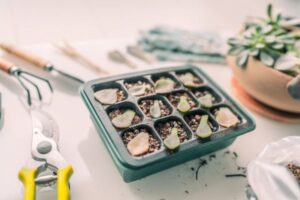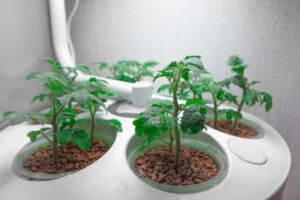Within the sanctuary of our homes, an enchanting world of greenery unfolds as indoor plants gracefully sprawl, their vibrant foliage and delicate blossoms infusing life and tranquility into our living spaces. As we embrace the art of indoor gardening, we embark on a captivating journey of nurturing and companionship with the botanical realm. However, amidst the harmonious coexistence with our green companions, we encounter the inevitable challenges that arise in the delicate balance of plant care. From subtle signs of distress to overt manifestations of maladies, indoor plants can face an array of common problems that necessitate our keen attention and tender care.
This comprehensive guide serves as an illuminating compass for both seasoned plant enthusiasts and novices alike, navigating the intricate world of identifying and treating common problems in indoor plants. In this verdant tapestry of horticultural wisdom, we delve into the multifaceted challenges that our green charges may encounter, ranging from pesky pests and cunning diseases to the consequences of environmental stressors and nutritional imbalances. Together, we shall equip ourselves with the knowledge and insights to discern the telltale signs of each issue and adopt effective remedies, ensuring that our indoor gardens flourish with vitality and remain resilient in the face of adversity.
The bond we forge with our indoor plants is akin to a timeless dance of reciprocity, as we tend to their needs, they, in turn, bestow us with beauty, cleaner air, and a sense of connection to the natural world. Through a harmonious interplay of care, observation, and gentle intervention, we unveil the secrets to creating an oasis of serenity within our homes, where vibrant foliage and fragrant blooms become a living testament to our nurturing stewardship. As we embark on this journey of horticultural exploration, let us embrace the profound joy of cultivating a thriving indoor garden and the boundless wonder of learning from the resilient and ever-evolving world of indoor plants.
Pest Infestations and Management
Amidst the beauty and tranquility that indoor plants bring to our living spaces, a lurking menace can disrupt this idyllic scene – pest infestations. These tiny intruders, ranging from aphids and spider mites to mealybugs and scale insects, have the potential to unleash havoc upon our cherished green companions. With stealth and cunning, they prey upon the tender leaves and succulent stems, sapping the very life force from the plants we hold dear. As conscientious plant caretakers, it is our solemn duty to remain vigilant and combat these relentless invaders through effective management strategies.
Detecting pest infestations in their early stages is paramount to swift and successful management. Diligent observation is the key to unveiling the telltale signs of infestation, such as the presence of visible insects, curling or yellowing leaves, and the appearance of sticky honeydew on the foliage. When an infestation is confirmed, immediate action is essential to prevent its escalation and protect other nearby plants. Isolation of the affected plant, if possible, helps contain the pests and restrict their spread. Employing natural remedies like neem oil or insecticidal soap offers an eco-friendly approach to deter and disrupt the pests. These methods, coupled with regular gentle washing of the leaves to remove pests and their eggs, form an initial line of defense for mild infestations.
For more severe pest infestations, adopting targeted insecticides becomes necessary, but it should always be approached with caution and strict adherence to the product’s instructions. Organic alternatives like insecticidal oils or botanical extracts can be employed to minimize the environmental impact while effectively managing the infestation. Introducing beneficial insects, such as ladybugs or predatory mites, into the indoor ecosystem can also serve as a natural pest control method, creating a delicate ecological balance that benefits both the plants and the beneficial insects.
Moreover, practicing proper hygiene and maintaining a clean and clutter-free environment around the plants can significantly reduce the risk of pest outbreaks. Regularly inspecting new plants before introducing them to our indoor garden can help prevent introducing pests unknowingly. By embracing a proactive and holistic approach to pest management, we fortify our indoor garden against the relentless assault of these tiny invaders, preserving the splendor of our green haven and ensuring the well-being of our cherished botanical companions.
Common Diseases and Treatments
Indoor plants are also susceptible to various diseases caused by fungi, bacteria, and viruses. These diseases can manifest as wilting, leaf spots, rot, or stunted growth. Overwatering, poor air circulation, and excessive humidity can contribute to the development and spread of these ailments.
To address plant diseases, start by removing and disposing of the affected plant parts to prevent further spread. Adjust watering practices to avoid waterlogged soil, which can promote fungal growth. Increase air circulation around the plants by using fans or placing them in well-ventilated areas. Consider using organic fungicides, such as copper-based solutions, to control fungal infections. Proper hygiene, sterilizing gardening tools, and using disease-resistant plant varieties can also aid in preventing disease outbreaks.
Environmental Stressors and Mitigation
Indoor plants can experience stress due to suboptimal environmental conditions. Issues such as inadequate light, extreme temperatures, improper humidity levels, and exposure to drafts or air conditioning can lead to weakened plants and reduced vitality.
To mitigate environmental stress, assess the specific needs of each plant species and position them in appropriate locations accordingly. Choose plants that thrive in low light if your home has limited natural light sources. Avoid placing plants near heating vents or air conditioning units, as these can cause temperature fluctuations and drafts. Using a humidifier or misting the plants regularly can help maintain proper humidity levels, especially in dry indoor environments. Regularly rotate the plants to ensure all sides receive adequate light and to promote even growth.
Nutritional Deficiencies and Supplementation
Indoor plants depend on the nutrients present in their potting soil for their growth and health. However, over time, the soil can become depleted, leading to nutritional deficiencies in plants. Common signs of nutrient deficiencies include yellowing leaves, stunted growth, and poor flowering or fruiting.
Supplementing the plant’s diet with appropriate fertilizers can address nutritional deficiencies. Choose fertilizers with a balanced blend of nitrogen (N), phosphorus (P), and potassium (K) to support overall plant growth. Additionally, consider using specialized fertilizers with micronutrients like iron, magnesium, and calcium, depending on the specific needs of the plant species. Follow the recommended application rates and schedules to avoid over-fertilization, which can be detrimental to the plants.
Overwatering and Underwatering Management
Improper watering is a common issue that indoor plant owners face. Overwatering can lead to root rot and suffocation, while underwatering can cause dehydration and nutrient uptake issues.
To manage watering effectively, establish a consistent watering schedule based on the specific water needs of each plant species. Before watering, check the soil’s moisture level by inserting a finger or a moisture meter into the soil to gauge whether watering is necessary. Use well-draining pots and potting mixes to prevent waterlogged soil and root rot. For plants with specific water requirements, such as succulents, adjust the watering frequency accordingly.
Conclusion
Caring for indoor plants is a rewarding and fulfilling endeavor, but it comes with its challenges. As we have explored in this guide, identifying and treating common problems that indoor plants face is essential for their long-term health and vitality. By being vigilant for signs of pest infestations, diseases, and environmental stressors, we can take prompt action and implement appropriate treatments to save our beloved plants from further harm.
Moreover, we have learned the significance of providing our indoor plants with the right balance of nutrients and water. Proper fertilization and watering practices are vital to ensure our plants receive the nourishment they need to flourish. Equipped with this knowledge, we can create an optimal environment for our indoor green companions to thrive and enhance our living spaces with their natural beauty and air-purifying abilities.
As we deepen our connection with these living organisms, we forge a bond with the natural world within the confines of our homes. The act of nurturing indoor plants becomes a meaningful journey of growth, patience, and understanding. In return, our indoor garden graces us with tranquility, joy, and a reminder of the delicate intricacies of life.
Let us continue to embrace our roles as caretakers and guardians of these botanical wonders, fostering a haven of greenery that not only enriches our lives but also serves as a testament to the profound beauty and resilience of the plant kingdom. Through our dedication and attentiveness, we cultivate an indoor oasis where life thrives, and the profound connection between humans and nature thrives.



